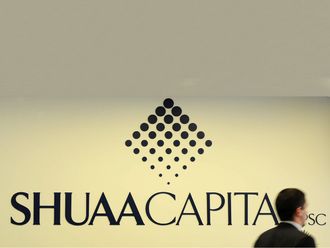Warsaw: The dollar jumped on Wednesday to its highest levels against the euro and a basket of major currencies since last September, returning to gains after a shaky start to August that called into question its broader strength.
Two days of upbeat signals on the domestic housing market have been enough to put the U.S. currency back on track and it has now gained some 7 cents, or just under 5 per cent, against the euro since early May.
That again encouraged speculation that the longer-term rally predicted at the start of this year by some of the biggest investment houses may finally be under way as monetary policy in Europe and the United States heads in opposite directions.
The greenback broke through resistance around $1.3300 and last November’s high of $1.3295 per euro to trade as high as $1.3275 in morning trade in Europe. It also climbed to a 4 1/2-month high against the yen.
The only resistance came from sterling, propped up after a rough couple of weeks by minutes that showed Bank of England policymakers had broken ranks over interest rates for the first time in three years, with two of them unexpectedly voting to tighten policy.
“The dollar can retain its bid tone into the end of the week,” said Stephen Gallo, a strategist with Canadian bank BMO in London, pointing to rising U.S. housing starts on Tuesday and steady US bond yields this week.
The dollar index rose as high as 82.118, its highest since September. It last stood at 82.081, up a quarter of a per cent on the day.
The yen slid 0.4 per cent to 103.33 yen per dollar and the New Zealand dollar fell below support at levels near $0.8400 to its lowest in more than five months.
The dollar has been helped by a recovery in U.S. 10-year Treasury yields this week. They were last at 2.407 per cent, compared with a 14-month low of 2.303 per cent last Friday.
EURO WEAKNESS Some market participants said the dollar’s rise had more to do with weakness in other major currencies.
Sterling rebounded from four-month lows against the dollar after the Bank of England minutes showed both Martin Weale and Ian McCafferty voted to start raising interest rates in August.
“It was clearly a relief to get a signal like this morning’s for the pound. It has relieved the pressure,” said a dealer with one London bank. “That said, I think the past month’s action has blown a hole in sterling’s prospects. I think most people think the rally we saw in the past year has topped out.” Sterling gained 0.2 per cent against the dollar at $1.6649 and as much as half a per cent against the euro at 79.775 pence per euro in response.
The single currency, already undermined by a struggling euro zone economy, has suffered from growing signs this month that sanctions between the West and Russia will hurt growth more in Europe more than in the United States.
Most analysts have cast this week as a pause, waiting for the next signal from the U.S. Federal Reserve on how close it is to raising interest rates next year, at a time when the European Central Bank is under pressure to ease policy further.
Minutes of the Fed’s July policy meeting are due later on Wednesday, but a bigger focal point may be Fed Chair Janet Yellen’s speech on Friday at an annual gathering of central bankers in Jackson Hole, Wyoming.
“Our economists expect an overall dovish theme to persist but are wary that a softening in the disinflationary rhetoric might be in the offing given recent comments from FOMC members,” RBC Capital Markets’ Michael Turner said in a morning note.
“The main game for Fed communications remains the upcoming Jackson Hole gathering.”











